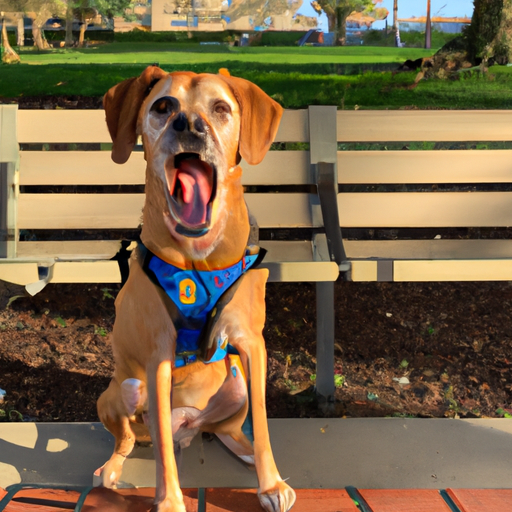If you’re a dog owner, you’ve probably noticed your furry friend panting occasionally. This behavior, while normal in certain circumstances, can sometimes seem to occur for no apparent reason. The aim of this article is to delve into the complexities of why dogs pant, exploring it from various angles including physiological, behavioral, and environmental standpoints.
Table of Contents
- An Introduction to Panting
- Physiological Reasons for Panting
- Behavioral Reasons for Panting
- Environmental Reasons for Panting
- When Panting Becomes a Concern
- Frequently Asked Questions
Key Takeaways:
- Dogs pant primarily to cool down.
- Anxiety, stress, and excitement can cause dogs to pant.
- Panting can also be a sign of health issues.
An Introduction to Panting
Panting is a behavior that mostly occurs in dogs, serving several important functions. The most commonly recognized purpose is thermal regulation. Dogs, unlike humans, don’t sweat through their skin to cool down. Instead, they rely on panting. When your dog pants, they’re essentially evaporating moisture from their tongues, nasal passages, and the lining of their lungs, helping to cool their body down.
You might find this article on dog’s panting informative.
Physiological Reasons for Panting
Dogs pant to regulate their body temperature. When dogs exert themselves physically, their body temperature rises. This could be after a vigorous play session, a walk, or any other form of physical activity.
In some cases, dogs may pant due to health issues. These could range from heart problems, respiratory disorders, and heatstroke, to pain or trauma. Certain breeds are also more prone to panting due to their physical makeup. For example, brachycephalic breeds like Bulldogs and Pugs often pant more due to their shorter snouts and airways.
Behavioral Reasons for Panting
Sometimes, your dog may pant as a response to emotional states. Dogs that are anxious, stressed, or excited may pant excessively. This could be in response to a thunderstorm, fireworks, a new person or pet in the house, or even a trip to the vet.
In some cases, dogs may pant when they’re seeking attention. This study explores dogs’ emotional responses in more depth.
Environmental Reasons for Panting
Environmental factors can also cause dogs to pant. Hot, humid weather conditions can trigger panting in dogs as they try to cool down their bodies. Similarly, if your dog has been in a warm room or car, they might start panting.
Make sure you provide a cool, shaded area for your dog during hot weather and never leave them in a parked car, even with the windows down. Check out this advice on how to keep your dog cool in summer.
When Panting Becomes a Concern
While panting is a normal behavior in dogs, it can sometimes be a sign of a health problem. Excessive panting, especially when it’s coupled with other symptoms like loss of appetite, lethargy, or restlessness, could be cause for concern.
If you notice any of these signs, it’s best to consult a vet. Here’s an article that talks about common health problems in dogs.
Frequently Asked Questions
-
Is panting normal in dogs?
Yes, panting in dogs is normal and serves several purposes like cooling down and expressing emotions. -
When should I be concerned about my dog panting?
If your dog is panting excessively, and it’s coupled with symptoms like loss of appetite, vomiting, increased thirst, or seeming overly tired, you should consult a vet. -
Can weather affect my dog’s panting?
Yes, hot and humid weather can cause your dog to pant more as they attempt to cool their body down.
In conclusion, while panting is a normal behavior in dogs, it’s important to be aware of any changes in your dog’s panting patterns. Understanding why dogs pant can help you better care for your pet and ensure they remain healthy and happy. You can learn more about canine behavior in this article.



